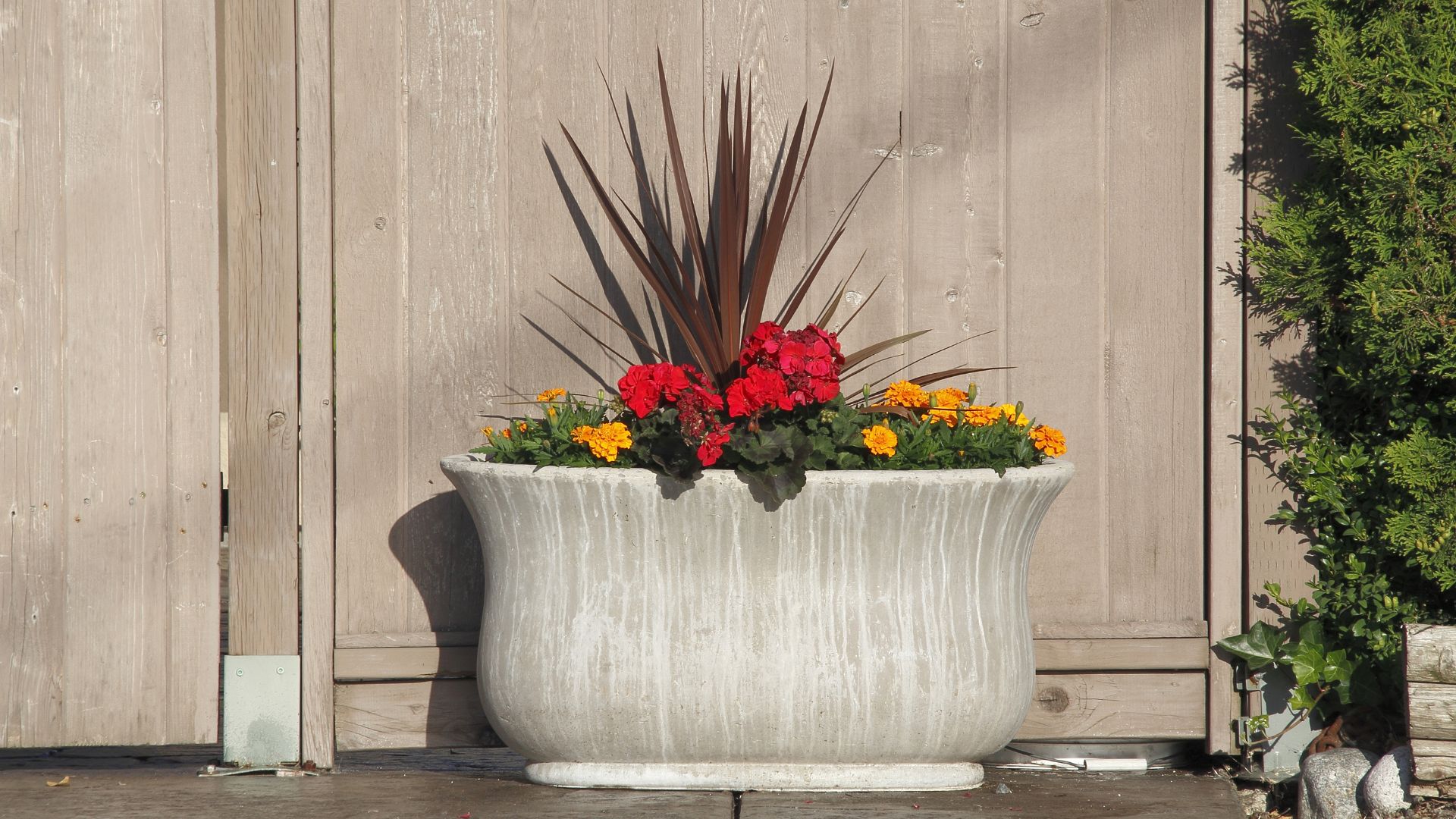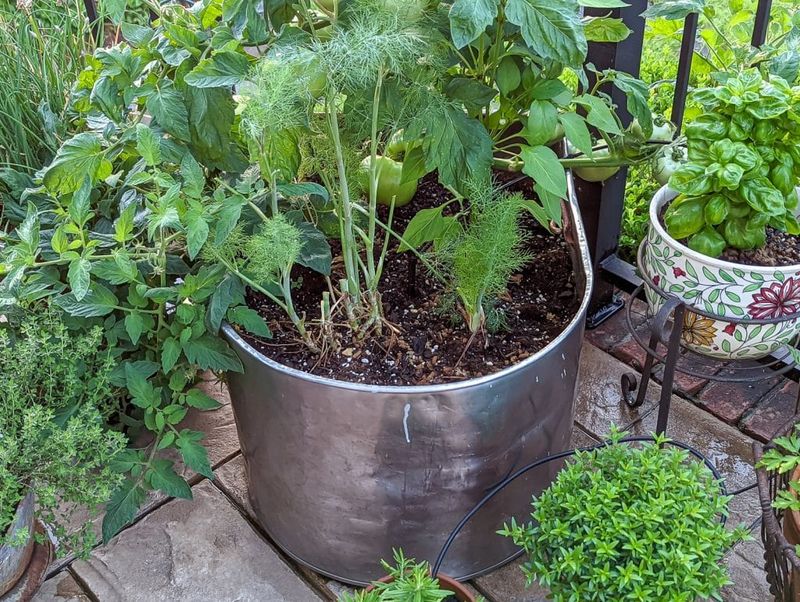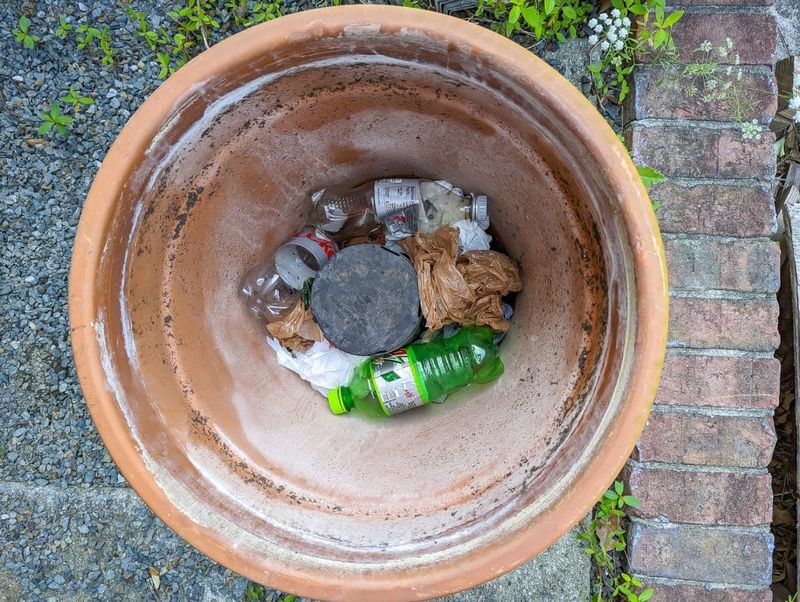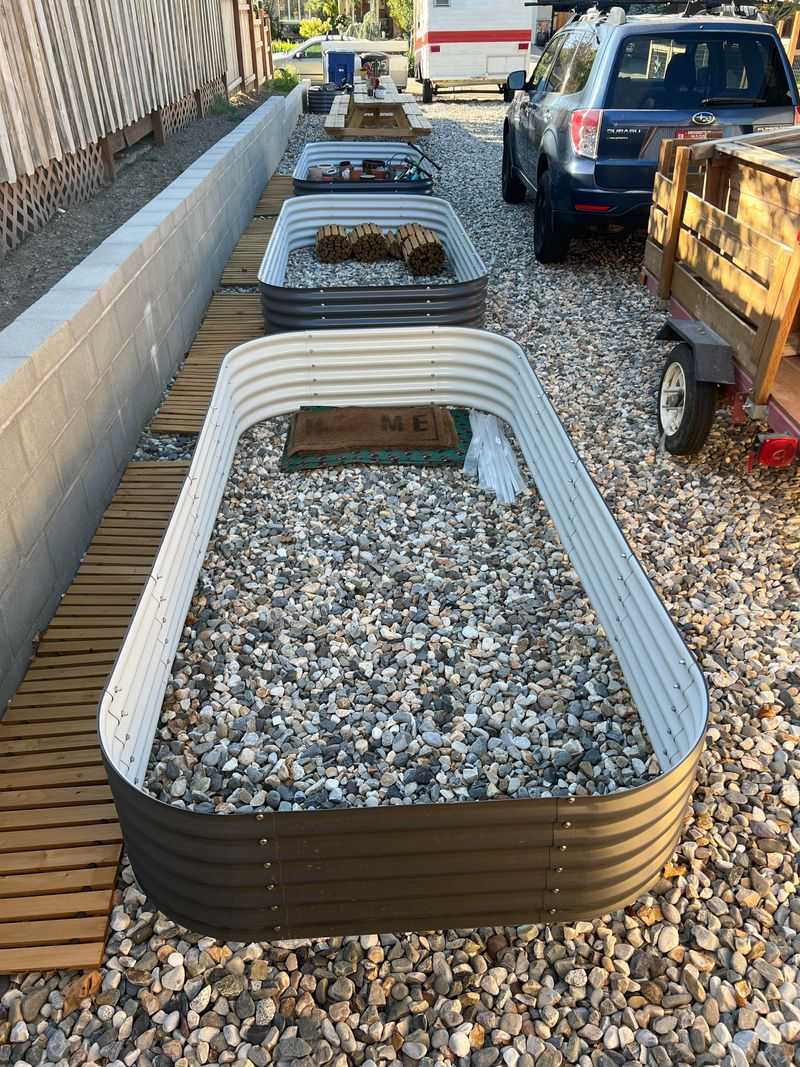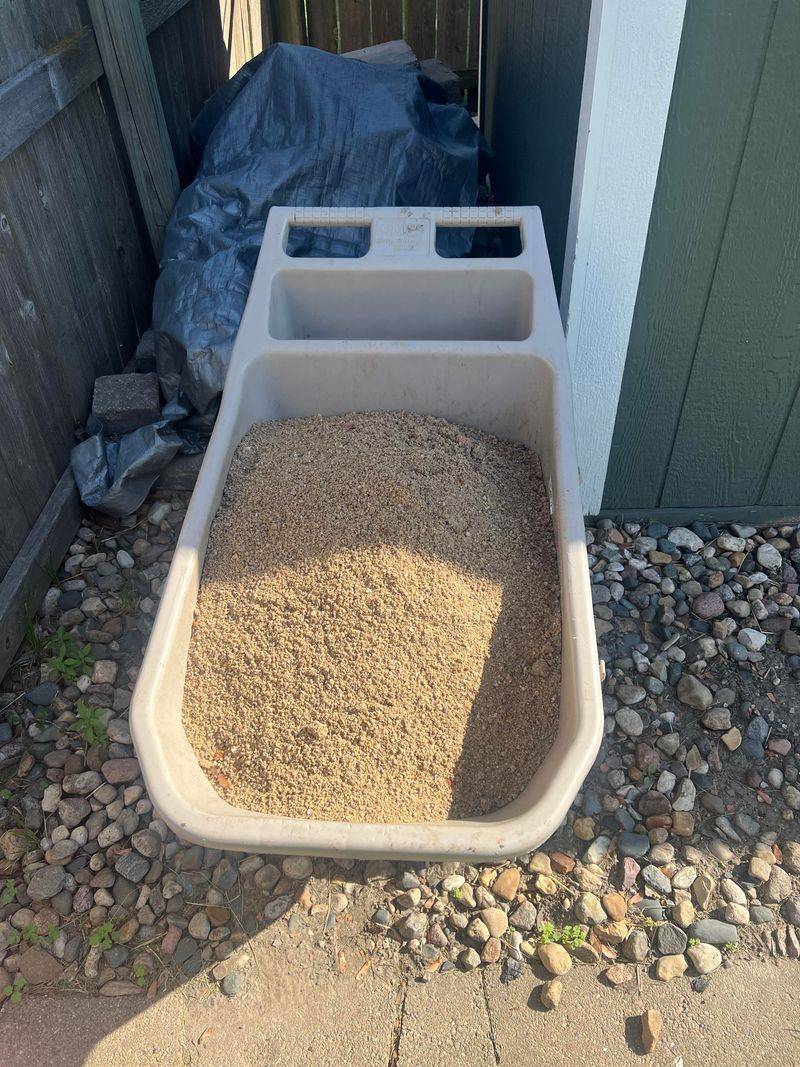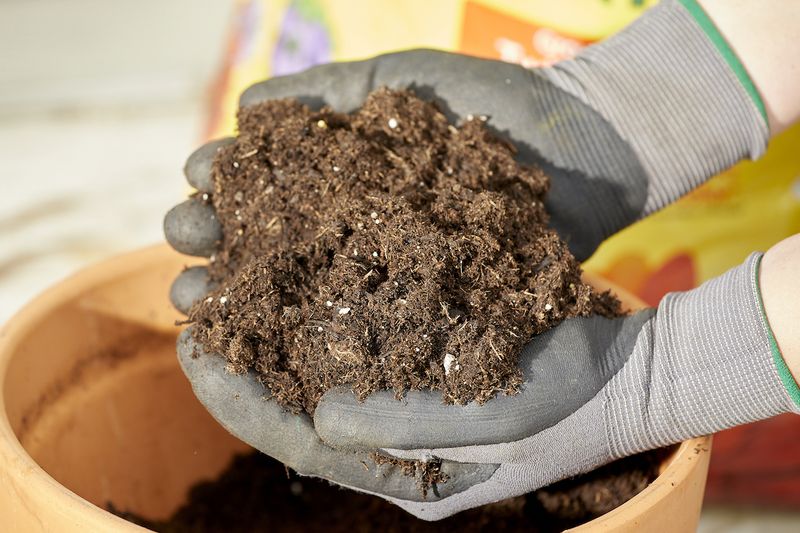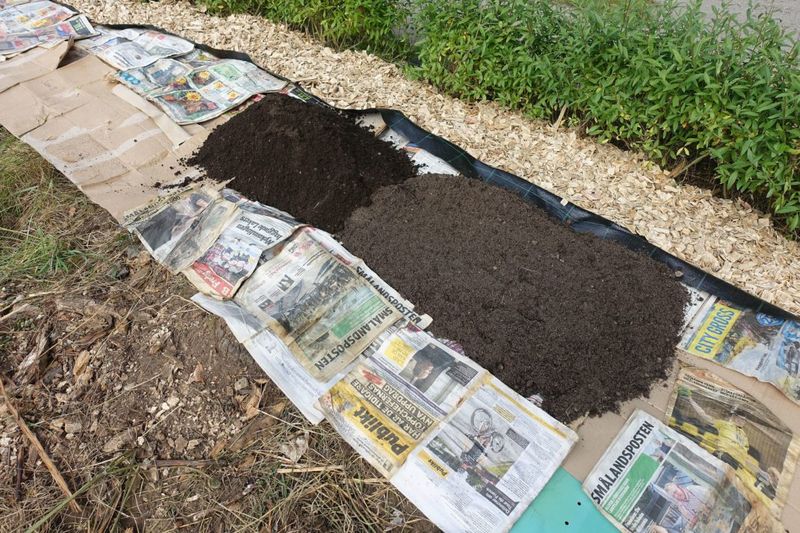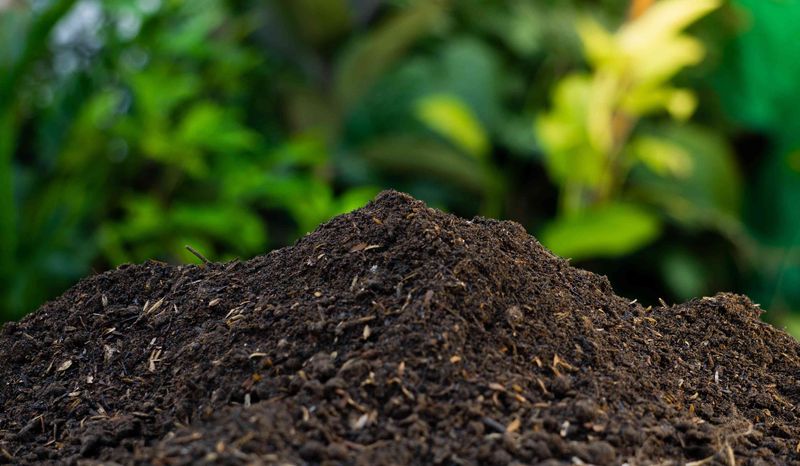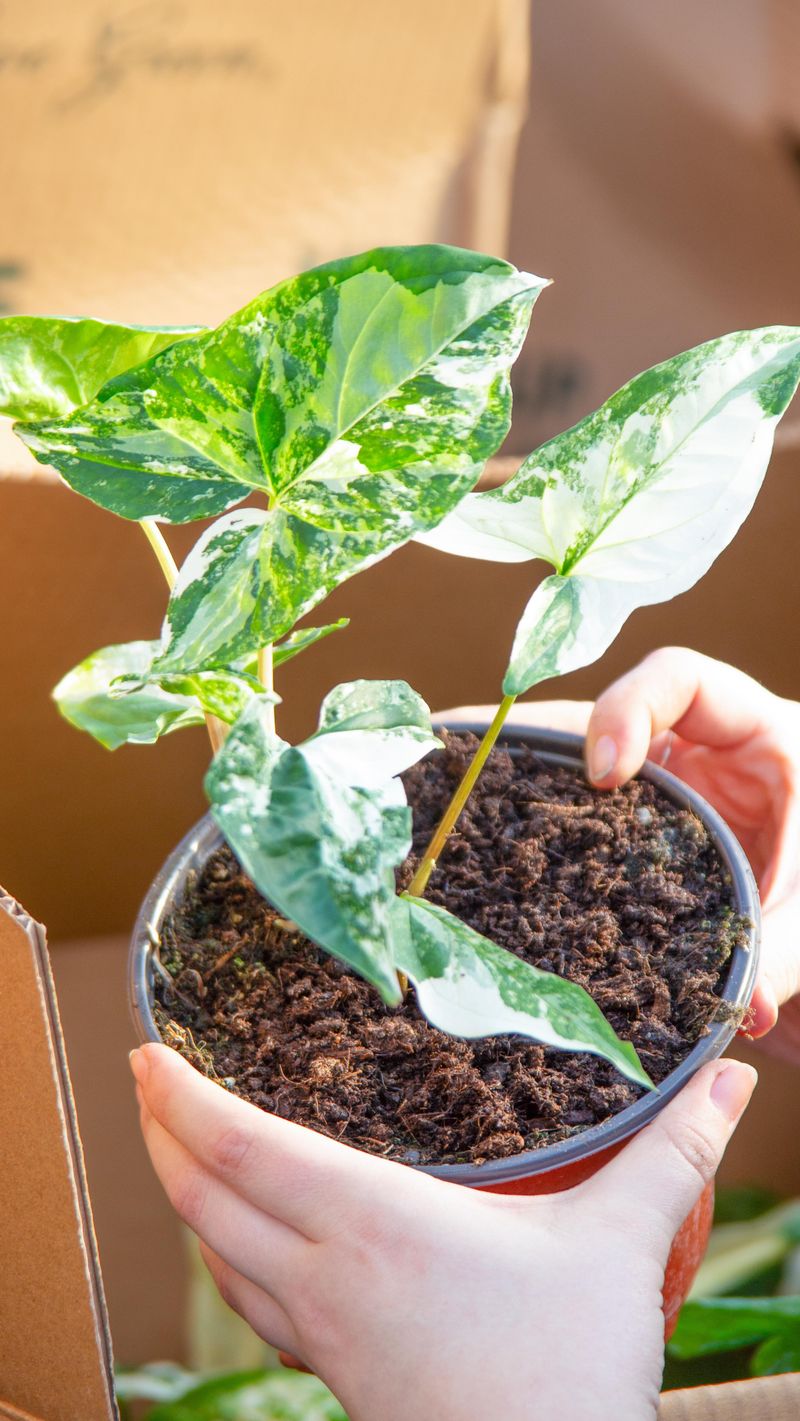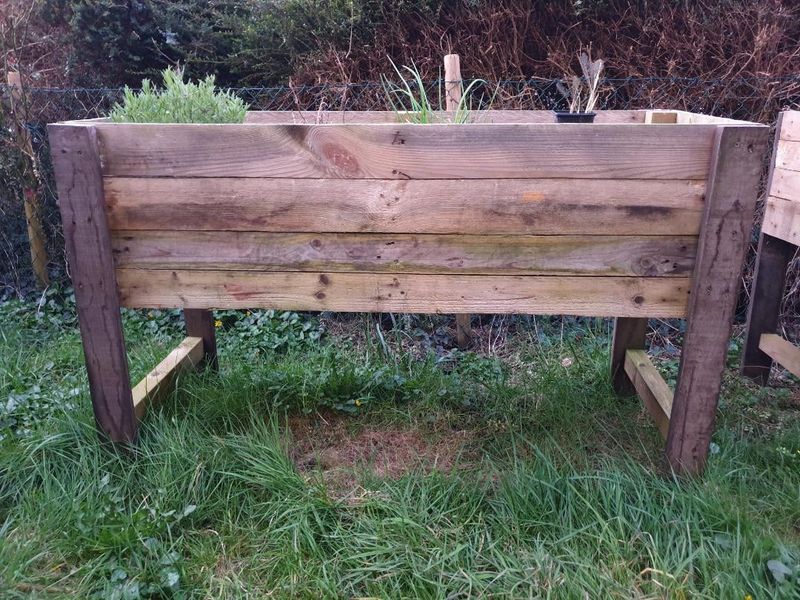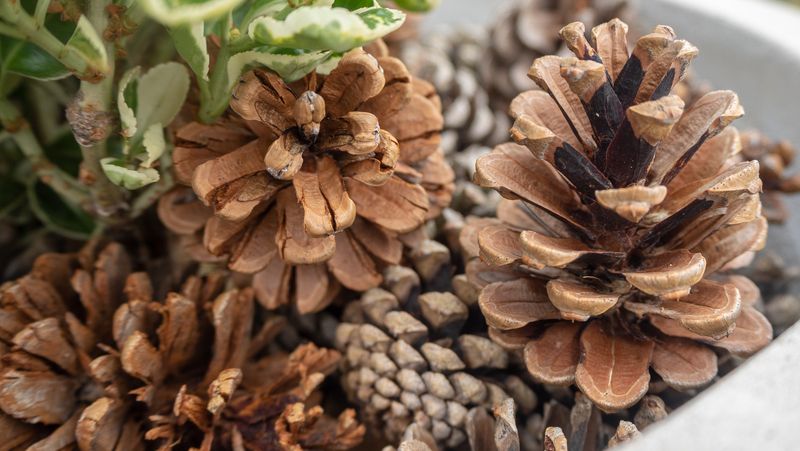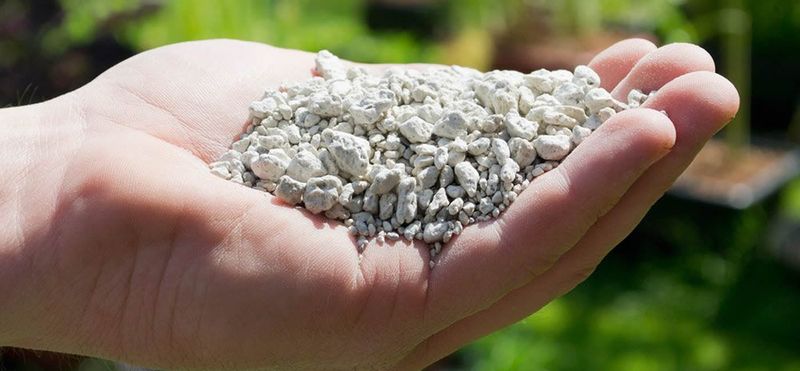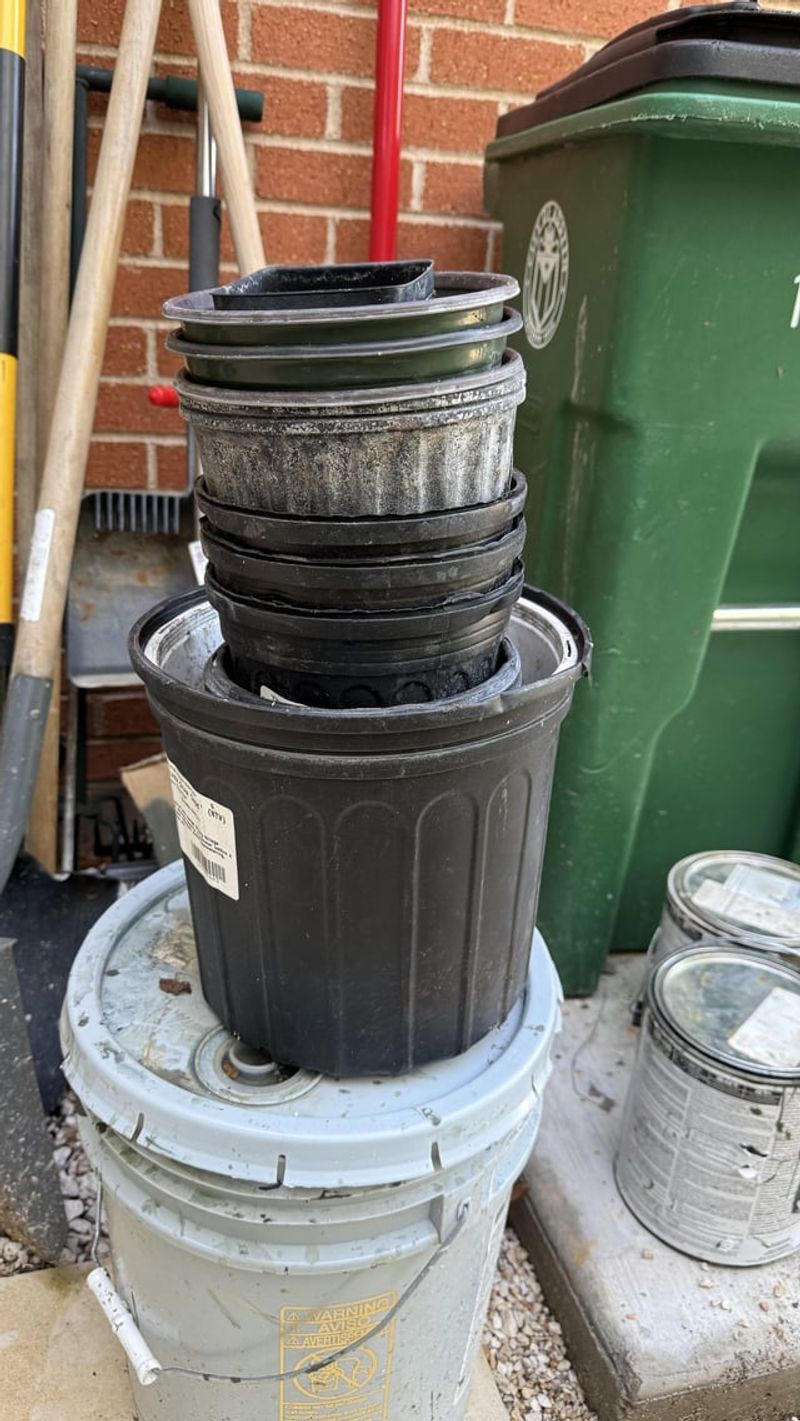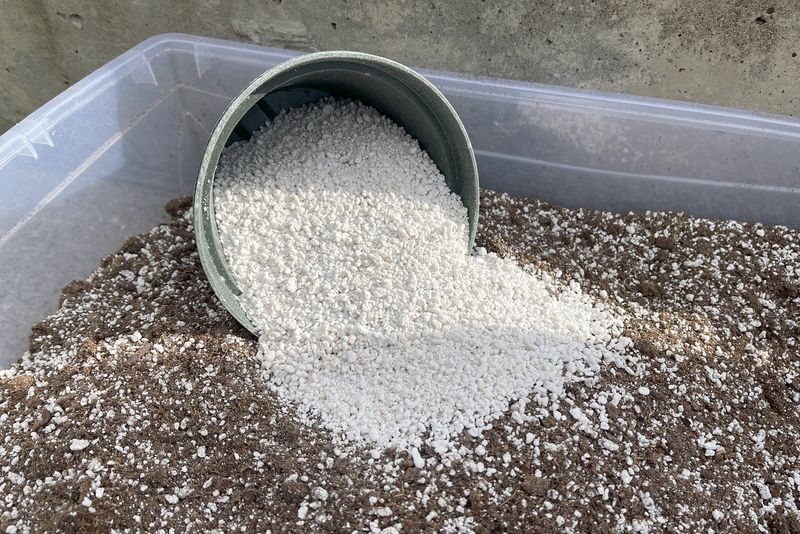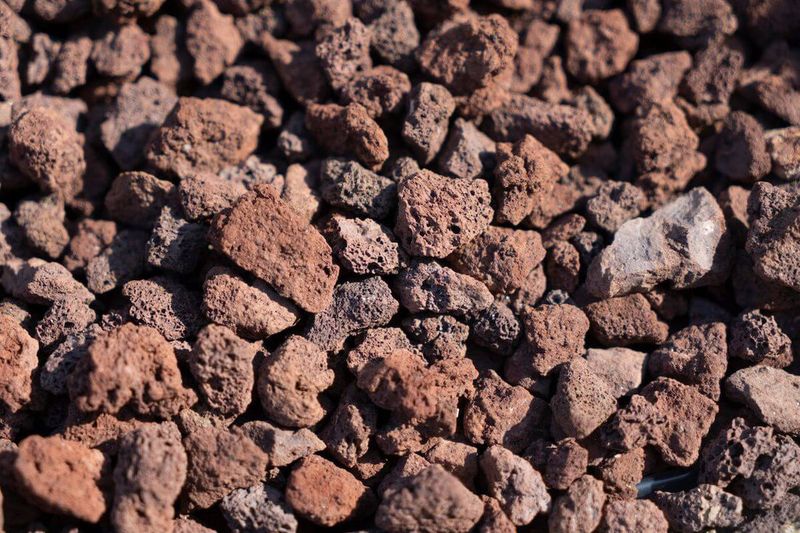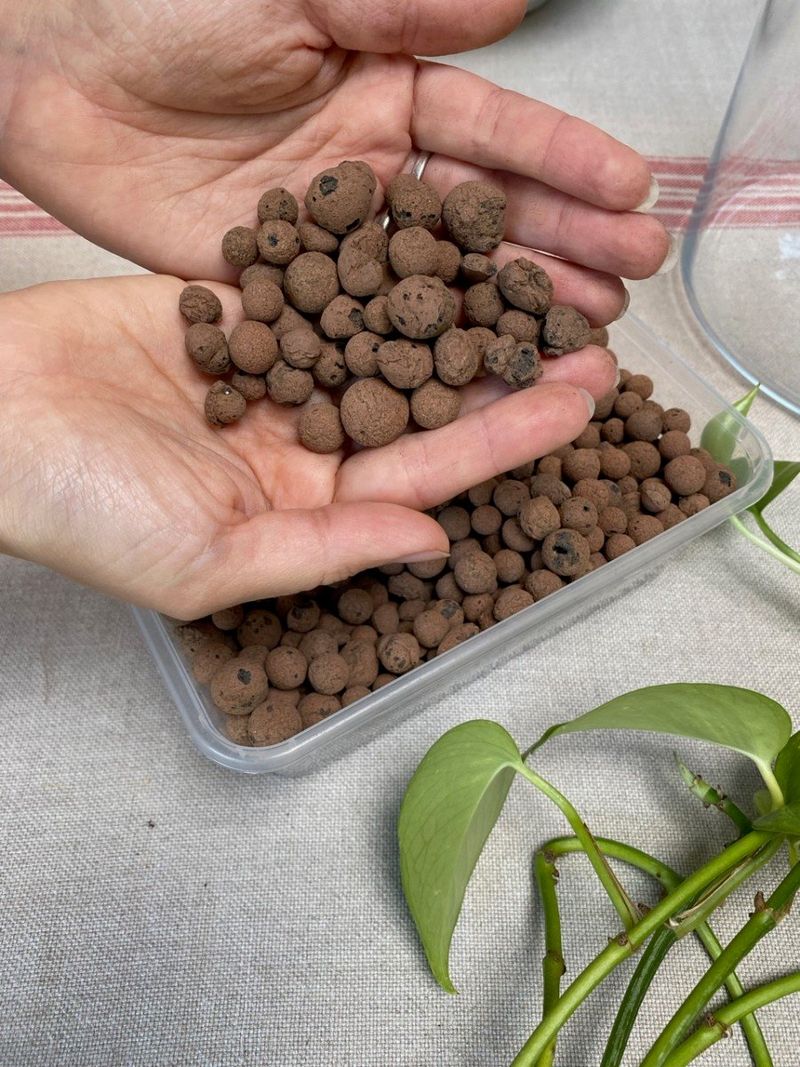Filling the bottom of large planters can save you money on potting soil and make those heavy containers easier to move. But I’ve learned the hard way—like the time I used packing peanuts and they floated up through the soil after every watering.
Not my finest garden moment. What you put at the bottom really matters. It’s not just about saving a few bucks—good drainage and root health are on the line. The wrong filler can lead to soggy soil, pests, or unhappy plants that never quite thrive.
Whether you’re potting up a patio centerpiece or setting up balcony containers, it pays to get this step right. After years of experimenting (and more than a few fails), I’ve put together a guide to what not to use—and what works like a charm.
1. Styrofoam Peanuts
Despite being lightweight and seemingly perfect for drainage, these pesky packing materials break down over time, leaching chemicals into your soil. They also have a frustrating tendency to work their way up to the surface during watering.
The environmental impact is equally concerning since Styrofoam can take hundreds of years to decompose. I once used them in a large outdoor planter only to find them scattered across my yard after a heavy rain.
Additionally, they compress under the weight of soil and water, eventually causing the soil level to sink dramatically. Your plants deserve better than this unstable, potentially toxic foundation.
2. Regular Household Trash
Tossing empty yogurt containers or plastic wrappers into the bottom of planters might seem like clever recycling, but it creates serious problems. Food residue attracts pests and can start decomposing, introducing harmful bacteria to your plant’s environment.
Regular trash also creates unpredictable air pockets and water flow patterns, leading to root rot in some areas while leaving others bone dry. I made this mistake with my fig tree, and the resulting odor when I had to repot was something I won’t soon forget.
Most household waste items also contain inks, dyes, and chemicals that can leach into your soil over time, potentially harming your plants.
3. Rocks And Gravel
Contrary to popular gardening myths, placing rocks at the bottom of planters doesn’t improve drainage—it actually makes it worse! This creates what scientists call a perched water table, where water won’t drain from the soil into the rocks until the soil is completely saturated.
The extra weight is another significant drawback, making your already heavy planters nearly impossible to move. I learned this lesson when I needed to relocate my rock-filled planters during a storm and couldn’t budge them an inch.
The dramatic difference in texture between rocks and soil also creates an environment where roots are reluctant to grow downward, limiting your plant’s access to the entire container.
4. Sand
Sand compacts over time, creating a dense layer that actually blocks drainage rather than improving it. When mixed with organic material from your potting soil, it can form a concrete-like substance that roots cannot penetrate.
The fine particles can also clog drainage holes, leading to standing water and root rot. During my early gardening days, I filled the bottom third of a large planter with sand, only to discover a soggy, anaerobic mess when I repotted the following year.
Additionally, sand adds significant weight without providing any nutritional value or beneficial structure to your planting medium. Your container plants need proper drainage, not a beach vacation gone wrong.
5. Garden Soil From Your Yard
Garden soil from your yard seems like a free and convenient option, but it brings unwanted visitors to your containers. Weed seeds, fungal spores, and insect eggs often hitch a ride, creating problems you wouldn’t have with commercial potting mix.
This heavy soil also compacts easily in containers, restricting root growth and oxygen flow. I once filled several planters with backyard soil and watched as they transformed into dense, water-repelling bricks within weeks.
Yard soil also lacks the porosity needed for container growing, leading to poor drainage and potentially waterlogged roots. Save your garden soil for the garden and use appropriate materials for your containers.
6. Biodegradable Packing Peanuts
While these seem like an eco-friendly alternative to Styrofoam, biodegradable packing peanuts break down too quickly in moist environments. They collapse within weeks of planting, causing the soil level to drop dramatically and potentially exposing roots.
Made from corn starch or other food-based materials, they can actually become food for microorganisms, sometimes creating funky smells and encouraging fungal growth. My experiment with these in a monstera planter turned into a smelly science project I hadn’t signed up for.
As they decompose, they also release compounds that can affect soil pH and nutrient availability, potentially throwing off the careful balance your plants need to thrive.
7. Newspaper Or Cardboard Layers
Layering the bottom of planters with newspaper or cardboard creates a temporary barrier that eventually turns into a soggy mess. As these materials break down, they consume nitrogen from the surrounding soil—the very nutrient your plants need for healthy growth.
The decomposition process can also create an anaerobic environment where harmful bacteria thrive. I’ve cut open planters with newspaper bottoms to find blackened, slimy paper that smelled like rotten eggs.
Modern printing inks, while safer than older formulations, can still contain chemicals you might not want in your plant’s growing environment. If you’re growing edibles, these substances could potentially make their way into your food.
8. Non-Composted Organic Materials
Fresh grass clippings, leaves, or kitchen scraps seem like natural choices, but they’re problematic as planter fillers. These materials decompose rapidly, generating heat that can damage plant roots and drastically changing the volume of your growing medium.
The decomposition process also temporarily ties up nitrogen in the soil as microbes break down the carbon-rich materials. My tomato plants turned yellow when I used fresh lawn clippings at the bottom of their containers—a classic sign of nitrogen deficiency.
Raw organic materials can also attract pests looking for food and shelter, turning your beautiful planters into bug hotels. Wait until these materials have fully composted before adding them to your garden containers.
9. Plastic Bottles And Containers
Plastic bottles create irregular air spaces that disrupt water movement through the soil. Water can pool in some areas while leaving others completely dry, creating stress for your plants’ root systems.
Many plastics also break down over time when exposed to UV light, moisture, and soil microbes. This slow degradation can release microplastics and potentially harmful chemicals into your growing medium.
I’ve found that plastic bottles also make it difficult to remove plants when repotting, as roots often grow around and through the bottles, becoming entangled. What seemed like a clever recycling solution turned into a plant extraction nightmare when I needed to repot my overgrown dracaena.
10. Treated Or Painted Wood Scraps
Wood treated with preservatives contains chemicals specifically designed to prevent decomposition and kill fungi and insects—the very organisms that contribute to healthy soil. These toxins can leach into your potting medium and harm your plants.
Painted wood brings additional concerns, as older paints may contain lead while newer ones include various chemicals and microplastics. Even small amounts of these substances can impact plant health and potentially contaminate edible crops.
The wood will eventually break down despite the treatments, creating air pockets and causing soil subsidence. I once used some leftover deck wood in planters, only to watch my herbs struggle with strange discoloration until I realized my mistake.
11. Pine Cones
Natural and biodegradable, pine cones create excellent drainage while being lightweight and easy to work with. They break down very slowly, maintaining their structure for several growing seasons before gradually adding organic matter to your soil.
Their irregular shapes create plenty of air pockets that allow excess water to drain away from roots. I’ve used pine cones in my outdoor containers for years and noticed significantly healthier root systems when repotting.
As an added bonus, they’re free if you can collect them yourself, making them an economical choice for filling large planters. Just make sure to use ones that haven’t been treated with chemicals or collected from roadsides where they might have absorbed pollutants.
12. Horticultural Pumice
This volcanic rock creates perfect drainage while adding minimal weight to your planters. The porous structure of pumice holds just enough moisture to be beneficial without becoming waterlogged, creating an ideal environment for root growth.
Unlike organic materials, pumice doesn’t break down over time, maintaining consistent drainage year after year. It’s become my go-to filler for expensive ceramic planters where I want reliable performance without risk of damage.
The light color of pumice reflects heat rather than absorbing it, helping to keep root zones cooler during hot summer months. This natural material also doesn’t release any chemicals or compounds that might harm your plants.
13. Recycled Plastic Nursery Pots
Turning old plastic nursery pots upside down in the bottom of large planters creates stable, consistent drainage without the problems of loose materials. They maintain their structure indefinitely and won’t compress under the weight of soil and water.
The hollow structure significantly reduces the weight of large containers while maintaining plenty of space for excess water to flow away from roots. After struggling with too-heavy planters, I started using this method for my patio containers that need seasonal moving.
Unlike random plastic trash, these pots are made from food-grade plastics designed for plant growth. Just be sure to place them open-side down so soil doesn’t fill the cavities and defeat the purpose.
14. Perlite Or Vermiculite
These lightweight volcanic minerals create excellent drainage while adding virtually no weight to your containers. Both materials hold some moisture between waterings without becoming waterlogged, providing an ideal balance for root health.
Their sterile nature means no introduction of weeds, pests, or diseases to your carefully maintained containers. I’ve found this particularly important for indoor plants where I want to minimize the risk of bringing unwanted visitors into my home.
The white color of perlite and the silvery sheen of vermiculite reflect light back to the underside of leaves, potentially improving photosynthesis efficiency. These materials also maintain their structure for several years before needing replacement.
15. Lava Rock
The irregular, porous structure of lava rock creates excellent drainage channels while providing stability for large plants. Unlike regular rocks, lava rock is lightweight due to its natural air pockets, making containers easier to move than those filled with gravel or stones.
These rocks don’t break down over time, maintaining consistent drainage year after year without compacting. After switching to lava rock in the bottom of my palm planters, I noticed significantly improved growth and healthier root systems during repotting.
The rough texture also provides excellent grip for developing roots, giving plants additional anchorage. For very large containers that won’t be moved often, lava rock provides an excellent balance of drainage and stability.
16. Composted Pine Bark
Partially decomposed pine bark creates excellent drainage while slowly breaking down to add organic matter to your soil. The natural antimicrobial properties of pine help prevent harmful fungal growth in the moist bottom layer of your planters.
The chunky texture maintains air spaces even when wet, preventing the compaction issues common with finer materials. I’ve used pine bark in my outdoor containers for years and appreciate how it maintains its structure throughout the growing season.
As an added benefit, pine bark has a pleasant natural scent rather than the musty smell that can develop with some organic fillers. Just be sure to use composted rather than fresh bark, as fresh material can temporarily tie up nitrogen as it decomposes.
17. Expanded Clay Pellets (LECA)
These specialized clay balls are fired at high temperatures to create lightweight, porous pellets that excel at moisture management. They absorb excess water during heavy watering, then release it slowly back to the soil as it dries out.
Originally developed for hydroponics, LECA pellets maintain consistent air space around roots, preventing the deadly combination of compaction and waterlogging. Their uniform size and shape create predictable drainage patterns that help avoid wet spots and dry pockets.
While more expensive than some alternatives, their durability makes them cost-effective over time. I’ve reused the same clay pellets for years by simply rinsing them between plantings to remove root debris and mineral buildup.

